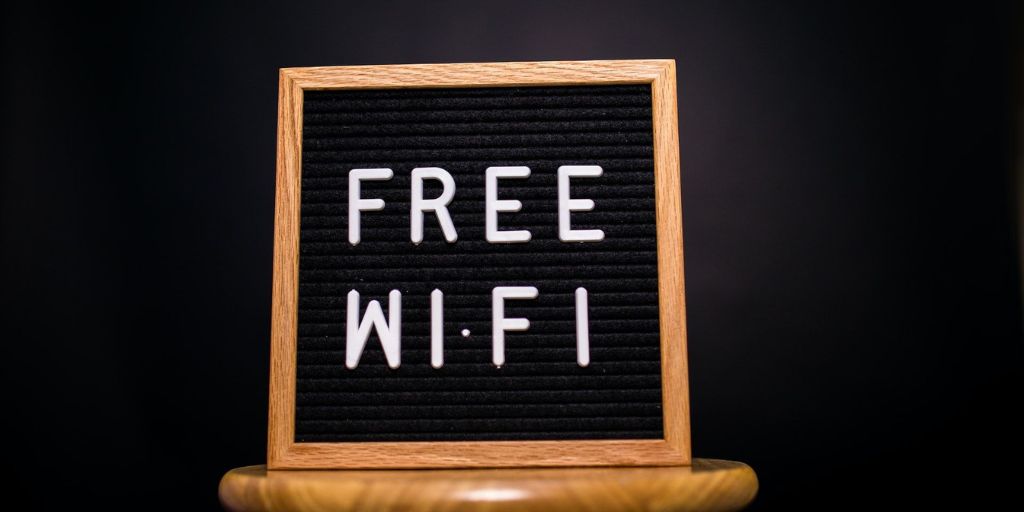In our hyper-connected world, free WiFi is as common as coffee shops and airport terminals. Whether you’re checking email at a café, downloading a file at a hotel, or hopping on a Zoom call at a coworking space, public WiFi networks offer undeniable convenience. But they also come with serious security risks.
As cyber threats evolve and more devices connect to unsecured networks, it’s important to understand just how safe public WiFi really is in 2025—and what you can do to protect your personal data.
Understanding Public WiFi
Public WiFi networks are wireless internet connections made available to the general public, often in places like:
-
Coffee shops and restaurants
-
Hotels and resorts
-
Airports and train stations
-
Libraries and shopping malls
-
Coworking spaces and conferences
These networks are usually open-access (no password) or shared-access (same password for all users), which makes them convenient—but also vulnerable to attack.
What Makes Public WiFi Risky?
Public WiFi networks are inherently less secure than private ones. Here’s why:
1. Lack of Encryption
Many public networks don’t encrypt the data being transmitted. That means any information you send or receive—login credentials, messages, emails, and more—could be intercepted by someone else on the same network.
2. Man-in-the-Middle (MitM) Attacks
This is one of the most common threats. In a MitM attack, a hacker positions themselves between your device and the internet, secretly intercepting and possibly altering your communications.
3. Evil Twin Networks
Hackers can set up fake WiFi hotspots with names similar to real public networks (e.g., “Free_Airport_WiFi”). If you connect to one, they can monitor or even control your traffic.
4. Packet Sniffing
Using simple tools, attackers on the same WiFi network can capture “packets” of data traveling over the connection. If the traffic isn’t encrypted, it’s surprisingly easy to read what you’re sending and receiving.
5. Malware Distribution
Some unsecured WiFi networks can be used to deliver malware to your device—especially if you have file sharing or system vulnerabilities.
Are All Public WiFi Networks Unsafe?
Not necessarily. In 2025, more businesses are taking steps to secure their WiFi offerings, including:
-
Using WPA3 encryption, which is much harder to crack than previous protocols
-
Isolating devices from one another on the same network (preventing peer-to-peer snooping)
-
Offering access through login portals with multi-factor authentication
-
Partnering with certified WiFi security providers
Still, the average user has no easy way to verify how secure a public network really is. That’s why caution is always recommended.
How to Stay Safe on Public WiFi: 8 Best Practices
If you rely on public WiFi regularly, you don’t have to give it up completely—but you should follow smart habits to reduce risk.
1. Use a VPN (Virtual Private Network)
A VPN encrypts all data transmitted from your device, creating a secure tunnel to the internet. This is the single most effective tool for protecting your privacy on public WiFi.
Tip: Use trusted VPN services like NordVPN, ExpressVPN, or ProtonVPN—avoid free VPNs, which often compromise your data.
2. Avoid Accessing Sensitive Accounts
Don’t log into banking apps, financial accounts, or critical work portals over public WiFi unless absolutely necessary. Wait until you’re on a secured network or connected via VPN.
3. Turn Off Auto-Connect
Disable automatic WiFi connection settings on your phone, tablet, or laptop. This prevents your device from connecting to rogue networks without your knowledge.
4. Enable Two-Factor Authentication (2FA)
If someone does manage to steal your password, 2FA can be a lifesaver. With an extra layer of verification—like a code sent to your phone—your account remains protected even if credentials are compromised.
5. Use HTTPS Websites
Always look for “HTTPS” in the address bar when visiting websites. It indicates the connection between your browser and the website is encrypted.
Browser tip: Use extensions like HTTPS Everywhere or modern browsers like Chrome and Safari that force secure connections.
6. Turn Off File Sharing and Airdrop
When on a public network, disable file sharing, printer sharing, and AirDrop. These can be entry points for attackers trying to interact with your device.
7. Update Your Software
Make sure your operating system, browser, and security software are always up to date. Many cyberattacks exploit vulnerabilities that were already patched—just not on your device yet.
8. Use a Personal Hotspot If Possible
If your mobile plan allows it, consider using your smartphone’s personal hotspot instead of public WiFi. It’s more secure and limits exposure.
What About Public WiFi at Hotels and Airports?
Hotels and airports are two of the most commonly used—and commonly targeted—public WiFi zones. Unfortunately, despite their scale, many still rely on shared passwords or outdated security protocols.
While some modern hotels now offer secure access per room or WiFi codes tied to your reservation, these setups aren’t universal. Airport WiFi networks, especially those labeled “Free_WiFi” or “Public_Airport_Internet,” should be used cautiously.

In both cases, treat these as untrusted networks:
-
Use a VPN
-
Avoid sensitive transactions
-
Log out after use
Are Smartphones Safer on Public WiFi Than Laptops?
Generally speaking, smartphones are a bit safer than laptops on public WiFi—mainly due to mobile operating systems being more restrictive and sandboxed. Android and iOS are designed to isolate app activity and reduce risk from background processes.
However, this doesn’t mean your phone is immune. A compromised public WiFi network can still intercept app traffic, especially if apps don’t use secure protocols. Many apps silently sync data in the background, making them vulnerable if protections aren’t in place.
So while phones might have fewer attack surfaces, they still require the same caution—especially when using sensitive apps.
The Bottom Line
So, how safe are public WiFi networks?
Answer: Not very—unless you take the right precautions. In 2025, cybercriminals are more sophisticated than ever, and public networks remain a key attack vector. But with tools like VPNs, 2FA, encrypted browsing, and smart digital hygiene, you can dramatically reduce your risk while enjoying the flexibility of WiFi on the go.
The next time you log into public WiFi at your favorite café or airport lounge, remember: convenience shouldn’t come at the cost of your security. With a few smart practices, you can stay connected and protected.




